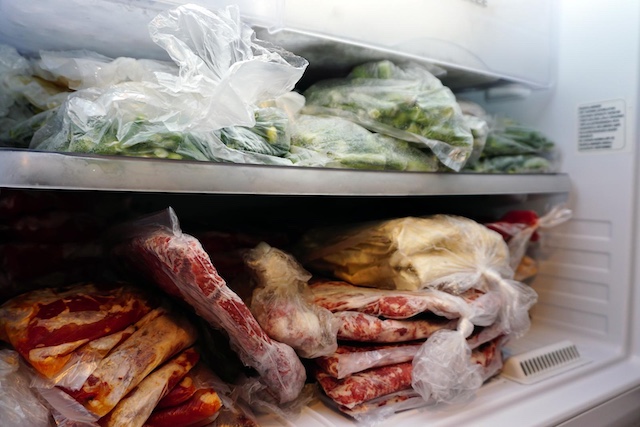Understanding whether meat can be refrozen after thawing is crucial for food safety and quality. The general consensus is that it is safe to refreeze meat that has been thawed in the refrigerator, provided it was not left at room temperature for too long.
Many people worry about the implications of refreezing meat, especially regarding taste and texture. It is true that quality may diminish, especially for cooked meats, but with the right techniques, individuals can mitigate these issues. Knowing how to handle meat appropriately can prevent waste and ensure delicious meals.
Exploring the myths and facts about refreezing meat unveils important insights that can inform better cooking practices. Readers will gain valuable tips on safe thawing methods, the best times to cook thawed meat, and how to maintain quality during refreezing.
Understanding the Basics of Freezing Meat
Freezing meat is a common practice for preserving freshness and extending shelf life. Key factors such as meat quality and safety guidelines play important roles in determining the effectiveness of freezing and refreezing processes.
Freezing and Meat Quality
The freezing process affects meat quality in several ways. When meat is frozen, the water inside it turns into ice crystals. These crystals can cause damage to the cell structure, leading to changes in texture when the meat is thawed.
To minimize quality loss, proper packaging is essential. Using airtight containers or vacuum-sealed bags can help prevent freezer burn, which occurs due to moisture loss during storage. It is advisable to freeze meat while it is still fresh, since freezing does not kill bacteria but only inhibits their growth.
Different types of meat may react differently to freezing. For example, poultry and lean meats tend to freeze well, while fatty meats can suffer more from textural changes.
Safety Considerations for Refreezing
Refreezing meat requires careful consideration of food safety guidelines. Meat should not be refrozen if it has been thawed at room temperature for more than two hours. Bacteria can grow rapidly during this time, increasing the risk of foodborne illness.
If meat has been thawed in the refrigerator, it can generally be refrozen safely. However, each refreezing process can degrade quality slightly. Cooked meat is also safe to refreeze, but it is recommended to consume it within two to three months for optimal taste.
Maintaining a consistent freezer temperature of 0 degrees Fahrenheit is crucial for food safety. Regularly checking the temperature helps to ensure that meat remains frozen solid.
Guidelines for Refreezing Meat
When considering refreezing meat, it is essential to understand the different practices for cooked and thawed meat. Each type requires specific attention to maintain quality and safety during storage.
Refreezing Cooked Meat
Refreezing cooked meat can affect its texture and flavor. It is important to note that moisture loss may occur, making meat less palatable after reheating.
- Storage Duration: If the cooked meat was stored correctly in the refrigerator, it can last up to three to four days before needing to be consumed or refrozen.
- Best Practices: To prevent quality loss, it is advisable to portion meat into smaller servings before freezing. This reduces the need to refreeze entire dishes, which can lead to deterioration.
- Safety Considerations: If cooked meat has been left at room temperature for over two hours, it should not be refrozen.
Refreezing Thawed Meat
When it comes to thawed meat, it is crucial to handle it correctly to ensure safety and quality.
- Thawing Method: Meat should only be thawed in the refrigerator, as this keeps it at a safe temperature. Thawed meat can be refrozen within a day without cooking, as long as it has not been left out.
- Quality Impact: Refreezing can compromise the meat’s quality. While it may still be safe to eat, the texture and flavor may not be optimal after multiple freezes.
- Monitor Time: If thawed meat has been kept in the refrigerator, it should be consumed or refrozen within three to five days. Always check for any signs of spoilage before refreezing.
Best Practices for Handling Frozen Meat
Proper handling of frozen meat is essential for maintaining its quality and safety. Adhering to recommended procedures for thawing and storing can prevent spoilage and ensure a tasty meal.
Thawing Procedures
Thawing frozen meat should always prioritize safety. The best method is to thaw meat in the refrigerator, allowing it to defrost gradually. This can take anywhere from 12 to 36 hours, depending on the type and size of the meat.
Avoid thawing at room temperature, as this can foster bacterial growth. If time is limited, a cold water method can be used. Submerge the sealed meat in cold water, changing the water every 30 minutes. Using a microwave is also an option, but the meat should be cooked immediately after thawing to ensure safety.
Storage Tips
After thawing, meat should be stored correctly to maintain its quality. Refrigerated meat should be cooked within 1 to 2 days. For best quality, it is advisable to consume thawed meat within 3 to 5 days according to guidelines.
If there are signs of spoilage, such as off odors or discoloration, the meat should be discarded. For those unsure about the meat’s condition, following the two-hour rule is crucial. If it has been left out at room temperature for more than two hours, it should not be consumed. Always label meat with the date it was thawed to keep track of freshness.
Final Thoughts
Refreezing meat can be done safely if the proper precautions are taken. While repeated freezing and thawing may impact texture and taste, following guidelines such as refrigerating meat during thawing, using airtight packaging, and monitoring storage times can help maintain quality. Understanding these best practices allows for safer meal planning, reduces food waste, and ensures that meat remains both safe to eat and enjoyable to cook.
